Hello there, plant lovers! Today, we will delve deep into the fascinating world of Money Plants. We have all heard about their reputation for bringing good fortune, but is this a myth or a reality?
Join us as we investigate the truth about the luck associated with money plants. We will trace their origins and see if they bring prosperity or if they are just superstitions. Along the way, we will learn about some of the most popular money plant varieties from around the world.
So, get ready and discover the secrets of this incredible plant!
What is a Money Plant?
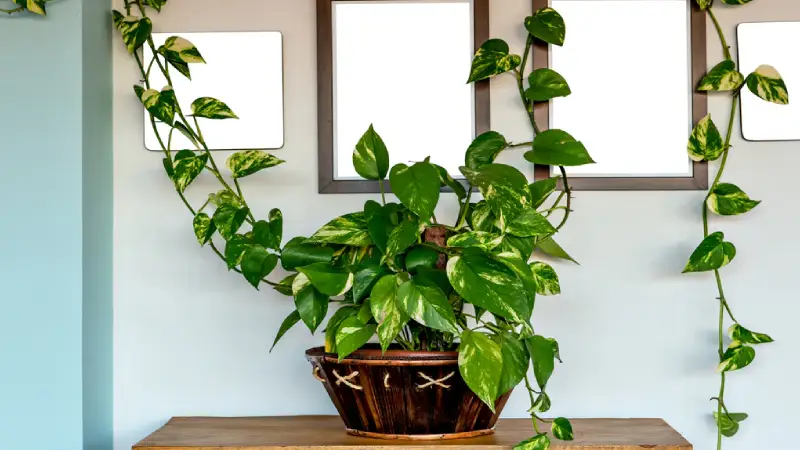
Money plant is an evergreen climbing plant with heart-shaped leaves. It has historical significance, and it is widely thought to benefit humans in a variety of ways. The Indian money plant is regarded as a lucky charm in various cultures around the world. It can be used to purify the air, and because of its various varieties, it is an excellent candidate for display.
Botanical Description of the Money Plant
Let’s take a look at some common biological characteristics of the money plant.
- Money Plant Scientific Name: Epipremnum aureum
- Common Names: Money Plant, Devil’s Ivy, Golden Pothos
- Family: Araceae
- Origin: Native to the Pacific Islands, money plants are found there.
- Description: Money Plants are evergreen climbing plants that have heart-shaped leaves that can be green, yellow-or white-variegated, or both. To aid in their ascent and surface attachment, they generate aerial roots.
The common name “Money Plant” refers to Epipremnum aureum, a popular indoor ornamental plant believed to bring good luck and prosperity. Let us talk about various types of money plants you can find in the following section.
15 Popular Money Plant Varieties Around the World
You will be surprised to learn that there are a numberous types of money plant, but the majority of them are regional varieties, which is why we have selected the globally known varieties. Given below is a catalog full of money plant images and their basic info.
Jade Plant (Crassula ovata)
The Jade Plant is a popular plant among people. It has thick leaves and requires little attention. Whether you keep it outside or indoors, it will stay satisfied. When it grows older, it can produce beautiful star-shaped flowers, typically white or light pink. People adore the Jade Plant because it is easy to care for and looks beautiful when blooming.
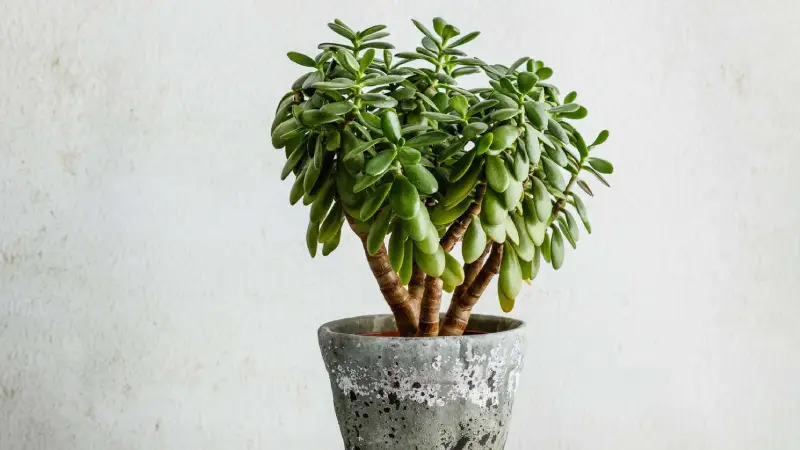
Reasons to Grow?
- Adaptable to different growing conditions.
- In many cultures, it represents good fortune, prosperity, and wealth.
- Gorgeous glossy green leaves with a distinct appearance.
Money Tree (Pachira aquatica)
A money tree is a popular choice among homeowners who believe it will bring them wealth and prosperity. It is a lovely plant with a trunk that occasionally becomes braided or twisted, as well as an abundance of green leaves that add to its visual appeal. People believe that having a lucky money plant will make them happier and more optimistic about money and life in general.
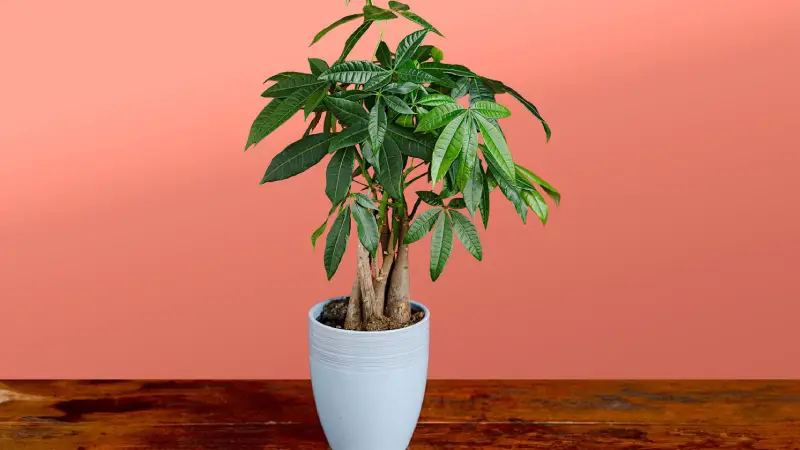
Reasons to Grow?
- Symbolizes prosperity and good fortune.
- It is easy to start and requires little maintenance.
- The braided trunk adds aesthetic appeal.
Silver Dollar Vine Plant (Lunaria annua)
The Silver Dollar Vine is a cool plant with shiny pods that resemble coins. People refer to it as the Money Plant or the Honesty Plant. The pods are its most appealing feature; they transform into flat, round, translucent circles that shine like silver coins. These gorgeous pods can also be used to create crafts or decorations.
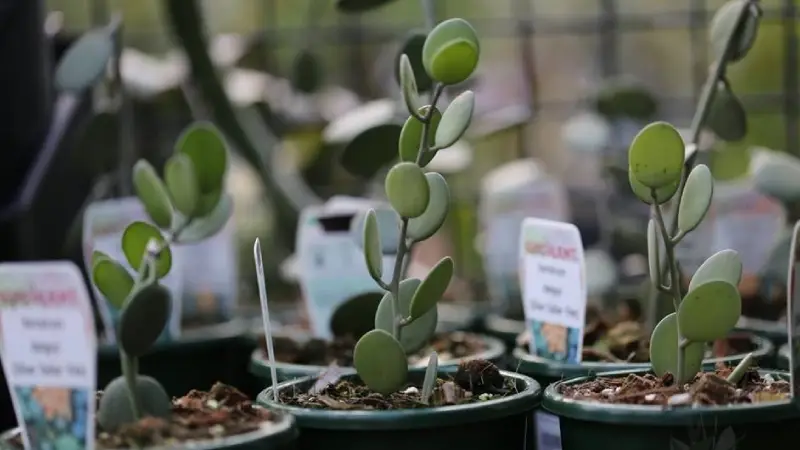
Reasons to Grow?
- It requires low maintenance.
- The leaves are silvery round and distinctive.
- Quick-growing and perfect for louver screens.
Manjula Pothos (Epipremnum aureum ‘Manjula’)
Manjula Pothos is a unique plant with multicolored leaves that range from green to cream to silver. These colors make it look very attractive, and it grows downward-dropping vines, which makes it useful for hanging baskets or placing them on shelves. It can tolerate moderate amounts of light in rooms, but not bright sunlight. It will look lovely and fresh in your room if you simply water it regularly and trim it occasionally.

Reasons to Grow?
- Grows long vines that work well in hanging baskets.
- Requires little maintenance and can withstand varying light levels.
- Pretty leaves with green, cream, and silver colors.
N’Joy Pothos (Epipremnum pinnatum ‘Njoy’)
The plant N’Joy Pothos has lovely green and white leaves. It is suitable for indoor use because of its ability to purify the air. It will be content with just some water and does not require much more attention. This plant prefers an environment with moderate lighting. It would look great on a shelf or in a hanging basket. N’Joy Pothos are easy to care for even if you do not know much about plants.
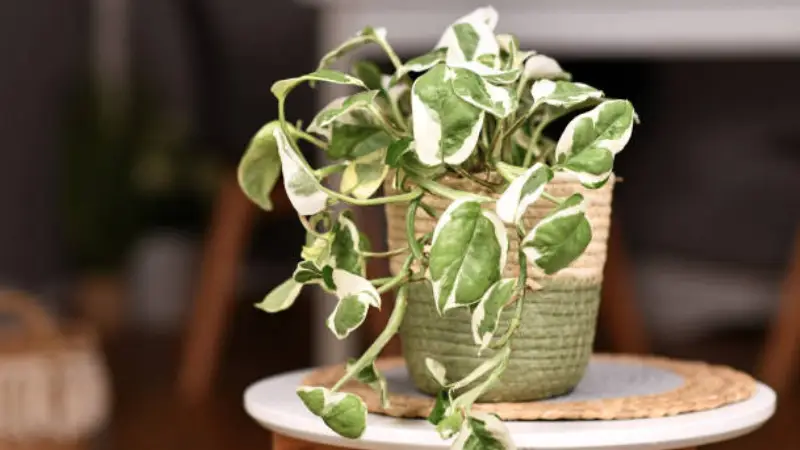
Reasons to Grow?
- It purifies the indoor air.
- N’Joy Pothos has pretty green and white leaves.
- Low maintenance and easy to maintain.
Cebu Blue Pothos (Epipremnum pinnatum ‘Cebu Blue’)
The attractive Cebu Blue Pothos plant features blue-green leaves. Its leaves are silver-blue and velvety, unlike ordinary Pothos. To care for it, just give it occasional watering and put it somewhere that gets some light, but not too much. This plant works well for hanging in baskets or dangling from shelves. People love Cebu Blue Pothos because it has a unique appearance and requires little maintenance.
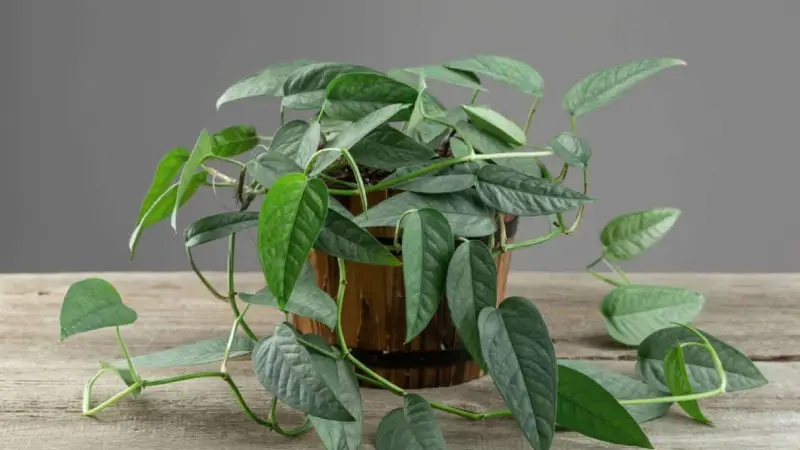
Reasons to Grow?
- You can use trailing shelves or hanging baskets to showcase this plant.
- Cebu Blue Pothos has unusual blue-green velvety leaves.
- It is simple to care for and appropriate for beginners.
Lucky Bamboo (Dracaena sanderiana)
Lucky Bamboo is a popular houseplant that has the appearance of bamboo. Lucky Bamboo is considered a lucky charm because people believe it brings happiness. It requires little water or sunlight, making it simple to care for. It can be placed in your home or place of business to enhance its appearance.
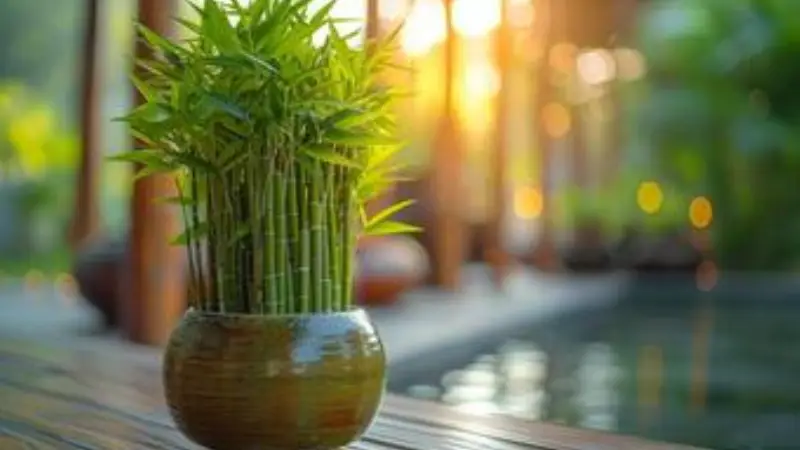
Reasons to Grow?
- It thrives in water or soil and requires little care.
- Symbolizes good fortune and positive energy.
- Resilient under low light conditions.
Spider Plant (Chlorophytum comosum)
The Spider Plant is a popular plant among many people. Its leaves are long and green with white stripes. It requires little to no effort to maintain, making it easy to care for. Just give it some occasional watering and put it in a well-lit area. You can also grow new Spider Plants, from small plants that sprout from larger ones. For those who enjoy having plants in their homes, spider plants are a great option since they are safe for pets and also aid in air purification.
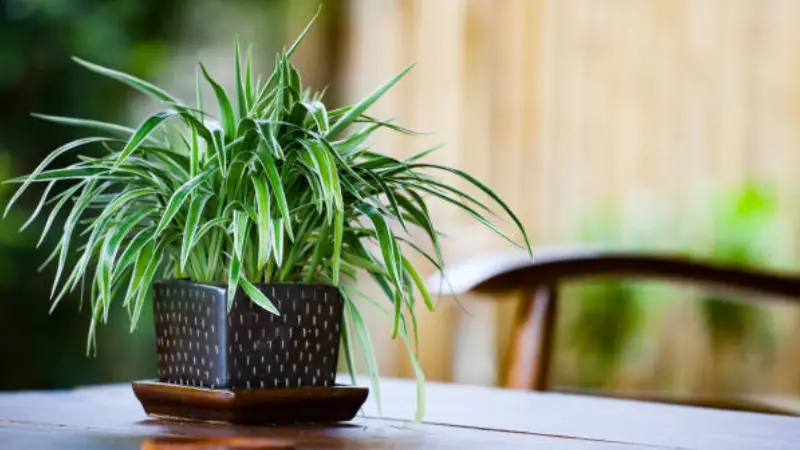
Reasons to Grow?
- Spider plants produce baby plants, which can be easily shared.
- Spider plants have leaves that are long and striped.
- They are easy to care for and do not require much water.
Swiss Cheese Money Plant (Epipremnum aureum ‘Swiss Cheese’)
With its distinct combination of fenestrated leaves and a trailing growth habit, the Swiss Cheese Money Plant is a highly desirable variety of Pothos. This plant is a lovely hybrid of the well-known Money Plant (Epipremnum aureum) and the classic Swiss Cheese Plant (Monstera deliciosa), producing gorgeous and heart-shaped leaves that lend a touch of nature’s beauty.
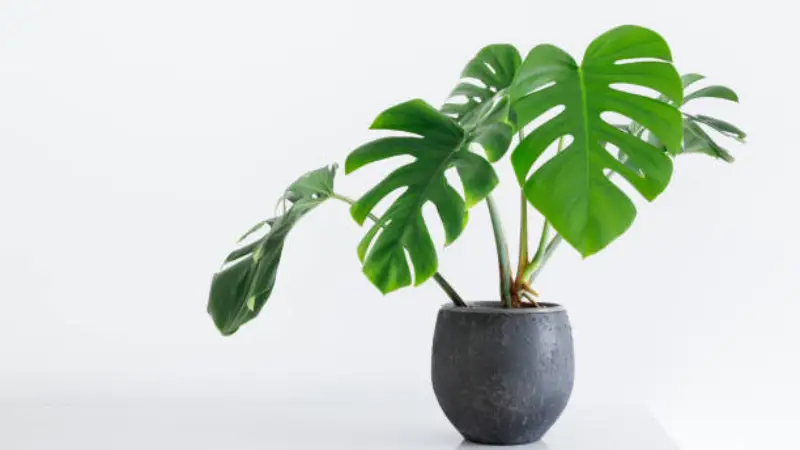
Reasons to Grow?
- It has funky leaves that can be a good addition for indoors.
- It purifies air, removing toxins and contributing to a healthier environment.
- Swiss cheese money plant is fast growing while being low-maintenance.
Rubber Plant (Ficus elastica)
Ficus elastica, the scientific name for the rubber plant, is a well-known houseplant that is praised for its glossy, green flesh and thick stems. Rubber trees can flourish in a range of indoor environments, be it warm or cold. You can also find some variegated types with creamy or white edges. The rubber plant can reach considerable heights but can be trimmed to a shorter form.
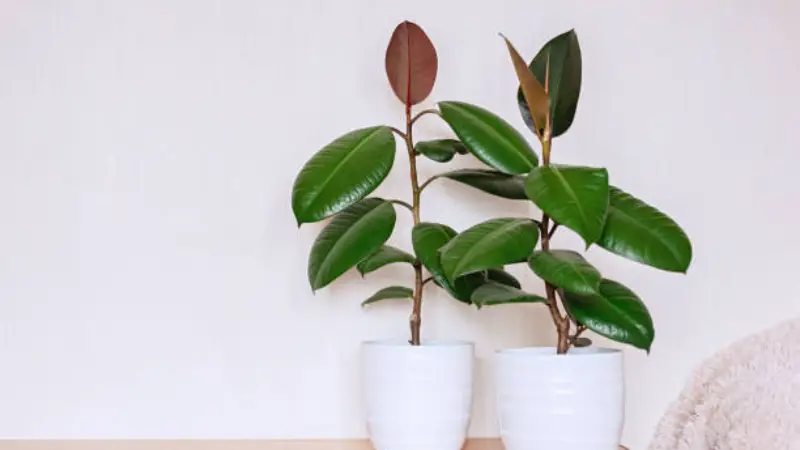
Reasons to Grow?
- Rubber plants are known to bring prosperity and repel negativity.
- They are easy to care for and do not have high water requirements.
Monstera Plant (Monstera deliciosa)
The name Monstera was given to the plant keeping in mind its monstrously sized leaves. Similar to the Swiss Cheese plant, it also features large holes on its leaf, that often get confused as bug bites. These plants make a lovely choice for tall houseplants. However, you may need to trim them as they often spread really wide.
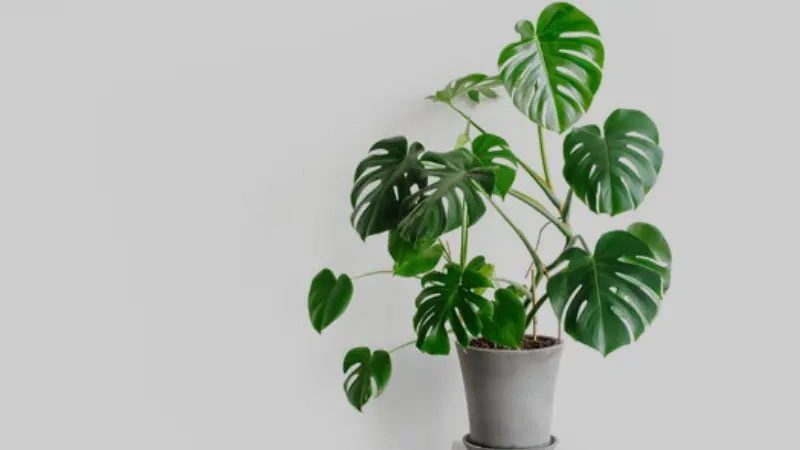
Reasons to Grow?
- Being a tall plant, they can do great as a cover for shorter plants.
- Monstera plant can tolerate bright sun and humid environment.
- They are easy to trim and maintain.
Marble Queen Pothos ( Epipremnum aureum ‘Marble Queen’)
Known for its yellowish-silvery spots contrasting the bright green leaves, Marble Queen Pothos can be a perfect centerpiece plant. Its vines have shorted leaf nodes as compared to others, making it highly compact. They prefer being in indirect sunlight, which is why it can thrive well indoors. Plus, they only require water when the top few inches are dry.
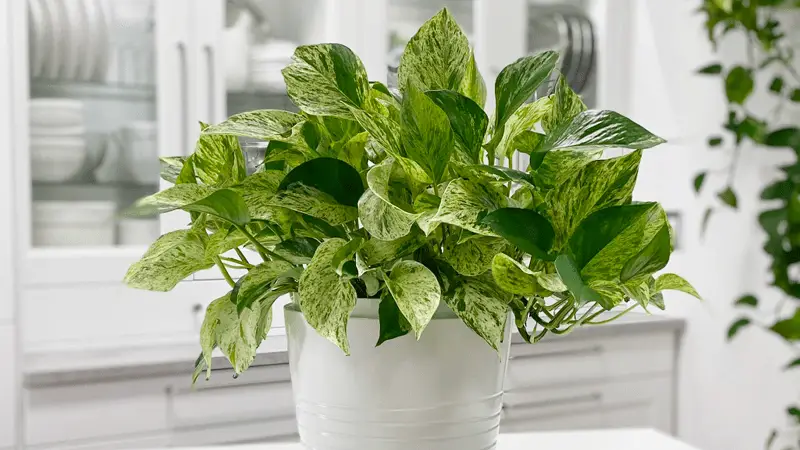
Reasons to Grow?
- It is slow-growing and, thus, does not require regular trimming.
- Easy to care for and does not require much water.
Silver Satin Pothos (Scindapsus pictus)
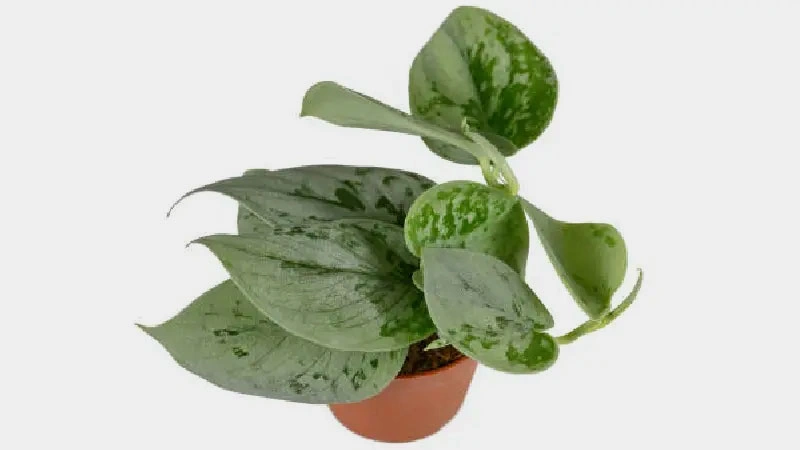
This particular money plant is unique from others belonging to the same genus as other money plants. In addition, the silver splash plant features silvery hues splattered across the verdant green foliage. Dangling from a basket, the plant creates a scene of peace and serenity!
Reasons to Grow?
- Slow-growing plant with compact leaf nodes.
- No extra caring requirements.
- Can tolerate bright sun and hot climate conditions.
Pennywort (Centella asiatica)
Pennywort is a remarkable money plant cherished for its funky-shaped leaves. Each of its branches features a large, umbrella-like leaf, forming a cluster together. It is known to serve as a culinary ingredient in a lot of regions. Moreover, it is known to cure colds and purify blood.
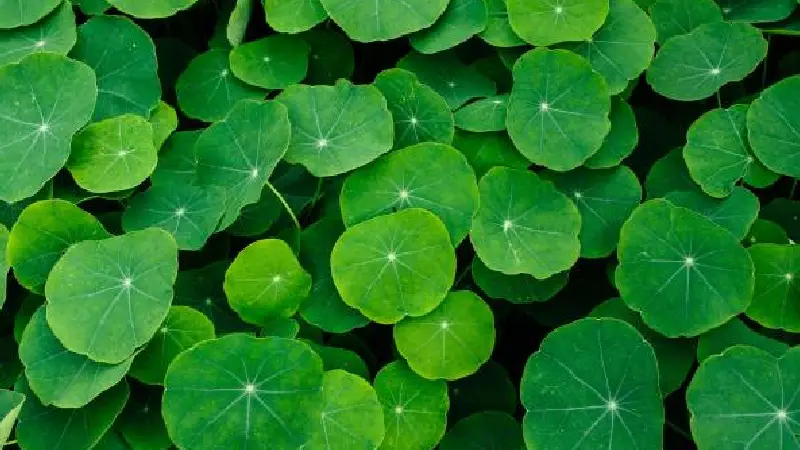
Reasons to Grow?
- Pennywort has both culinary and medicinal uses.
- These plants are easy to grow indoors.
- They do not require much water.
Chinese Money Plant (Pilea peperomioides)
This is another money plant that does not belong to the original pothos genus, but to Pilea. Often called as the pancake plant, the Chinese money plant is a popular houseplant with striking coin-shaped foliage and low maintenance needs. This perennial blooming plant is indigenous to southern China and grows naturally along the foothills of the Himalayas.
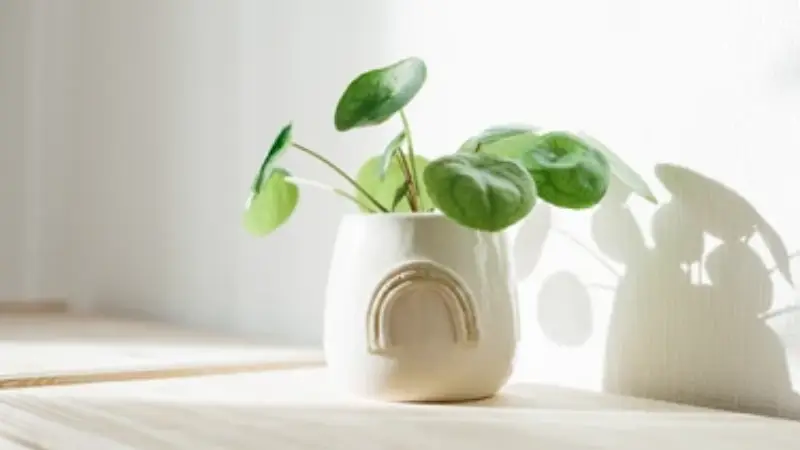
Reasons to Grow?
- Easy to grow and maintain.
- Can tolerate colder climate conditions and dry weather.
These are the top varieties of money plants found around the world, you can find the majority of these branches on online shopping apps or in various offline markets.
Benefits of Having a Money Plant
Money plants, like any other plant, can be extremely beneficial to you. Let us look at some of its benefits:
- Air Purification: Money plants purify the air by eliminating noxious materials, leaving the air healthier to breathe.
- Low maintenance: They require little care and can flourish in low light, which makes them perfect for novices or people with hectic schedules.
- Visually Appealing: They are visually appealing due to their long, attractive leaves. Some people also believe that this plant can bring good fortune, wealth, and a cheerful atmosphere.
- Highly Adaptable: Money plants are adaptable to a variety of indoor environments because they can be grown in pots or hanging baskets, among other containers.
- Easy to Propagate: You can easily grow your collection of plants by using their simple, cutting-based propagation method.
These are some of the benefits of growing a money plant atcoldse. However, a few types of money plants can be toxic to your pets and provide a breeding ground for mosquitoes, so it is always recommended that you change the water in your money plant daily.
Why are Money Plants Associated with Wealth?
These plants originated in South Africa, but they are now world-famous due to the low maintenance and other botanical factors associated with them.
The belief that money plants bring wealth has its roots in traditional beliefs and old folklore. Money plants are seen as a sign of luck and wealth in Feng Shui, the Chinese practice of balancing energy.
Additionally, one of the unique characteristics of this species is that certain varieties of money plants are used for air purification, which makes it an excellent choice for any kind of decoration. As a result, these plants create a positive environment inside the room.
It is obvious that people who are motivated by a positive environment earn more money than others; however, this is only one of the theories explaining why money plants are associated with wealth.
Final Words
Most people believe that having money plants in the house is a superstition, and while we do not support such superstitions, it is true that money plants can help you create a positive environment that will lead to a productive day.
Just keep in mind that, while most money plants are harmless, some may pose a threat to your pets, particularly cats, so it is always best to keep them away. With minimal care, you can easily decorate this plant wherever you want; it fits almost anywhere and takes up little space.
We hope you found the article useful.
What is the money plant species?
Money plants belong to the aureum species.
What is the scientific name of the money plant?
Epipremnum aureum is the scientific name for a money plant.
Which money plant is known as the lucky money plant?
Pachira aquatica is widely considered the lucky money plant.
Money Plant, Wikipedia
Money Plant Botanical Information, Planetneutral.com



